The origin of Chinese civilization can be traced back to Pangu’s creation, and around 3000 BC, three emperors and five emperors appeared, which was the beginning of China civilization. In 2500 BC, Emperor Xuanyuan fought against Chiyou, which was called "the battle between the two deer" in history. In 2697 BC,In the first year of the era of the Yellow Emperor, the five emperors abdicated the throne, and those who could live in it were transferred to Yu and Dayu to control the water, but they did not enter the house for three times.In 2000 BC, Dayu was elected as the Emperor for his meritorious service in controlling floods. Since then, the Xia Dynasty has been formally established.
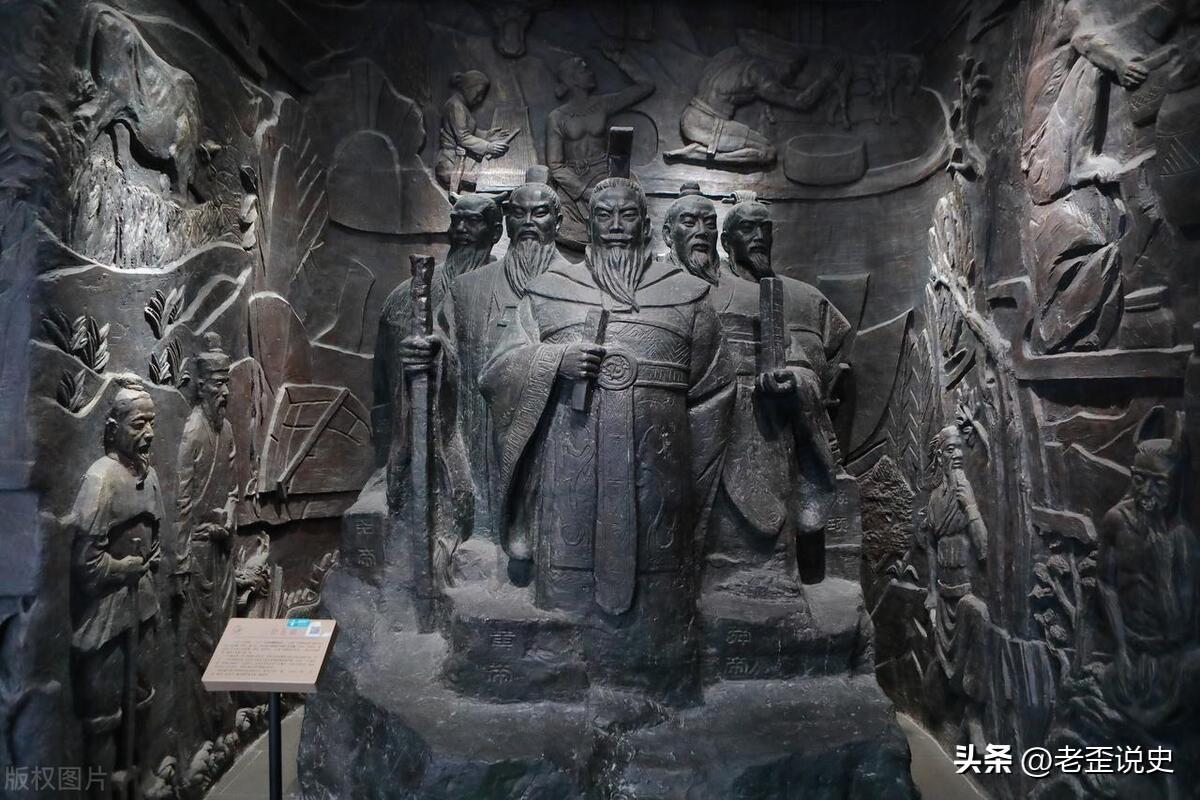
In 2060 BC, after Dayu’s death, his son inspired a coup and forcibly seized the throne, thus destroying the abdication system. After the death of Qi in 2020, his son Taikang ascended the throne. When Taikang was in power, he was greedy for pleasure, causing people’s resentment to boil. Hou Yi seized power, which was known in history as Taikang’s loss of the country and made Zhong Kang, Taikang’s younger brother, king of Xia, but the real power was in the hands of Hou Yi. In 1974, Hou Yi was killed by Han Zhuo, a close confidant, and became king on his own, and the Xia Dynasty perished. In 1933 BC, Shaokang, the direct grandson of Taikang, killed Han Zhuo with the help of the elders of the Xia Dynasty and restored the Xia Dynasty, which was called Shao Kang Zhongxing in history. In 1652 BC, Xia Jie, the 17th monarch of Xia Dynasty, ascended the throne. He was fatuous and cruel, drinking and having fun all day. Finally, in 1600, he was defeated by Shang Tang in the war of singing songs, and the Xia Dynasty was destroyed for 477 years.
In the same year, the governors elected Shang Tang as the son of heaven, and the Shang Dynasty was formally established.After the establishment of Shang Dynasty, Shang Tang died in the thirteenth year of his reign, and Waic succeeded to the throne. Waibing died after three years in office, and his younger brother Zhong Ren succeeded him. Zhong Ren died after four years in office. At this time, Yi Yin, the founding elder, was in charge, and Tai Jia, the son of Tai Ding, succeeded to the throne. Under Yi Yin’s urging, Tai Jia’s behavior was passable in the first two years after he succeeded to the throne, but not since the third year. He gave orders at will, indulged in pleasure, tyrannized the people, was in a daze, and undermined the laws and regulations formulated by Shang Tang. Although Yi Yin tried every means to persuade him, he wouldn’t listen, so Yi Yin had to exile him to the Tong Palace near the cemetery in Shang Tang, and let him reflect on himself. He was a regent, and he was known as "Yi Yin put too much armor". After three years in Tonggong, Tai Jia repented and blamed himself, and Yi Yin welcomed him back to Bodu (now Shangqiu City, Henan Province) and returned to his administration. When Tai Jia returned to power, he was able to Xiu De, and all the governors surrendered to Shang Wang, and the people were at peace.
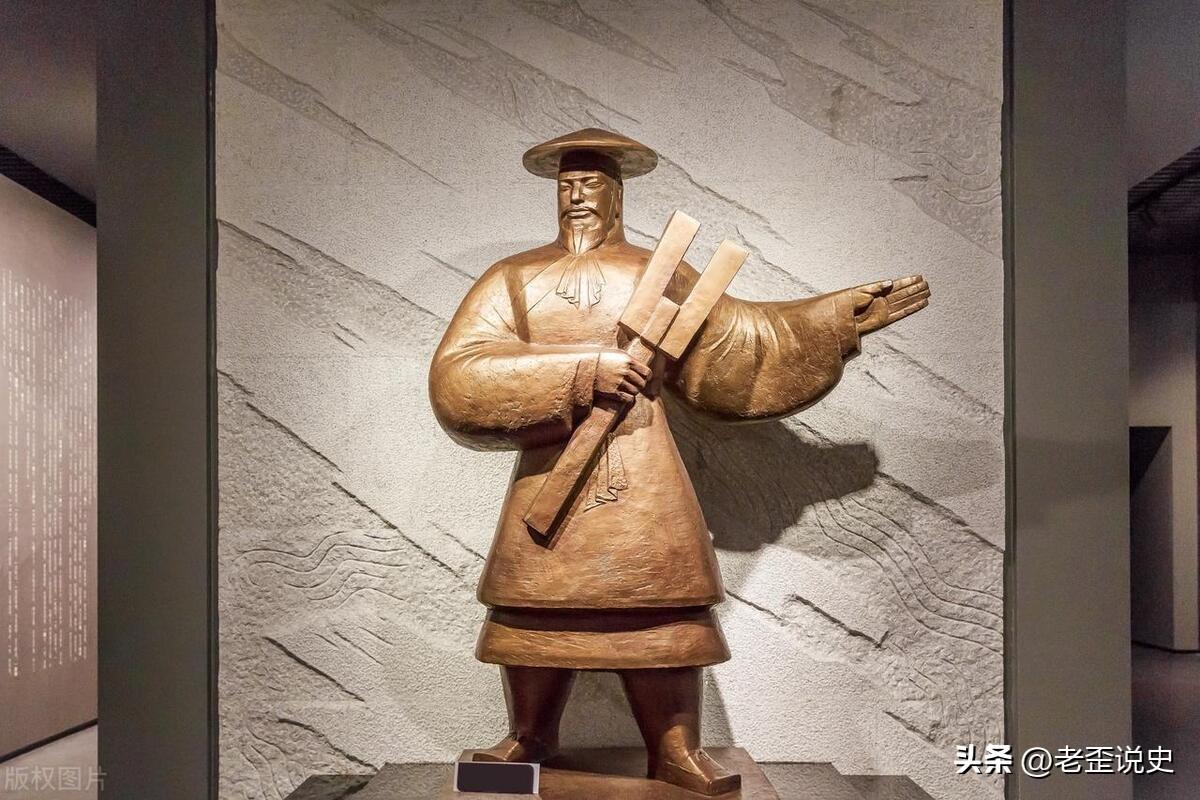
Before 1250, after Wu Ding, the 22nd monarch of Shang Dynasty, ascended the throne, the national strength reached its peak, which was called the flourishing age of Wu Ding in history. Before 1046, when Zhou Wang, the last monarch of the Shang Dynasty, ascended the throne, the Shang Dynasty had gradually declined, and various governors rose up and rebelled. Zhou Wang personally led the troops to counter the rebellion, but years of fighting greatly consumed the national strength. Finally, Zhou Wang was defeated by Zhou Wuwang in the battle of Makino and set himself on fire and died. Since then, 554 years after the founding of the People’s Republic of China, the Shang Dynasty has been passed down for 30 generations. At the same time, the longest dynasty in history, the Zhou Dynasty, was formally established.
In 711 BC, when Zhou Youwang, the 12th monarch of the Western Zhou Dynasty, was in power, he loved and praised him. The famous "bonfire play vassal" was Zhou Youwang. In order to win the favor of praise, Zhou Youwang abolished the queen Shenhou and Prince Ji, and Shenhou, the father of Shenhou, joined forces with the dog to kill Zhou Youwang. Since then, the Western Zhou Dynasty, which was founded in 275 years and spread to 12 kings, has perished. This year, Shen Hou won the throne of the abolished Prince Ji for Zhou Pingwang and moved the capital to Luoyang to the east. Therefore, this period of the Zhou Dynasty is called the Eastern Zhou Dynasty. The Eastern Zhou Dynasty was divided into two periods: the Spring and Autumn Period and the Warring States Period. Before 403, the surrounding kings named Han Qian and Zhao Ji, doctors of the State of Jin, as four princes. Even if the three families were divided into Jin, it ended in the Spring and Autumn Period and began in the Warring States Period, and Zhou Tianzi became the mascot of various vassal States completely. Three hundred and fifty-six years ago, Qin Xiaogong began to reuse Shang Yang and carry out political reform. After Shang Yang’s political reform, the national strength of Qin increased greatly. In the first two hundred and forty-nine, the Eastern Zhou Dynasty, which was spread to twenty-five kings in 515, was destroyed by the State of Qin. In the first 221 years, Qin Shihuang officially proclaimed himself emperor after destroying the six countries and established the Qin Dynasty.
Two hundred and ten years ago, Qin Shihuang died of illness, and Qin Shihuang Hai succeeded to the throne for Qin Ershi. After Qin Ershi succeeded to the throne, eunuch Zhao Gao mastered the real power and exercised brutal rule, which finally aroused the uprising in Wu Guang, Chen Sheng. Subsequently, Xiang Yu and Liu Bang also fought against Qin. In the first two hundred and seven years, Zhao Gao forced Qin Ershi to kill and then changed to Zi Ying. Succession. Five days later, Zi Ying killed Zhao Gao. A month later, Liu Bang led his troops into the customs, and Zi Ying surrendered to Liu Bang. Since then, the Qin Dynasty, which existed for fourteen years, has perished. In the first two hundred and two years, after Liu Bang defeated Xiang Yu in the Chu-Han dispute, he proclaimed himself emperor in Dingtao, Shandong Province, with the title of Han, which was called the Western Han Dynasty in history.
Thirty-three years ago, the twelfth emperor of the Western Han Dynasty became Emperor Han. During Liu Ao’s reign, he indulged in Jiuse Yu all day, and formally allowed his consorts to rule, which led to the imperial hegemony, and was dominated by the Queen Mother Wang Zhengjun, who laid the foundation for later Wang Mang to usurp the Han Dynasty. In the eighth year of AD, Wang Zhengjun was often forced to hand over the imperial seal, and Liu Ying was coerced to usurp the Han Dynasty and establish a new dynasty. Four times. In 210, the Western Han Dynasty, which spread to fourteen emperors, perished. In 23 AD, the reform failed, which led to the Red Eyebrow Uprising in Lin Lu, and was often finally killed by Lu Linjun. Since then, the new dynasty that has been thinking about the country for fifteen years has perished. In AD 25, Liu Bang’s ninth grandson Liu Xiu proclaimed himself emperor after the demise of the New Dynasty, and continued the title of the Han Dynasty. History says that in 184, after the twelfth emperor of the Eastern Han Dynasty, Emperor Han Ling succeeded to the throne, he extorted and sold officials and titles, and finally the Yellow Scarf Uprising broke out. Although the uprising was put down, the warlord regime and the situation of the Eastern Han Dynasty existed in name only was irreversible, which led to the formation of the situation of the Three Kingdoms.
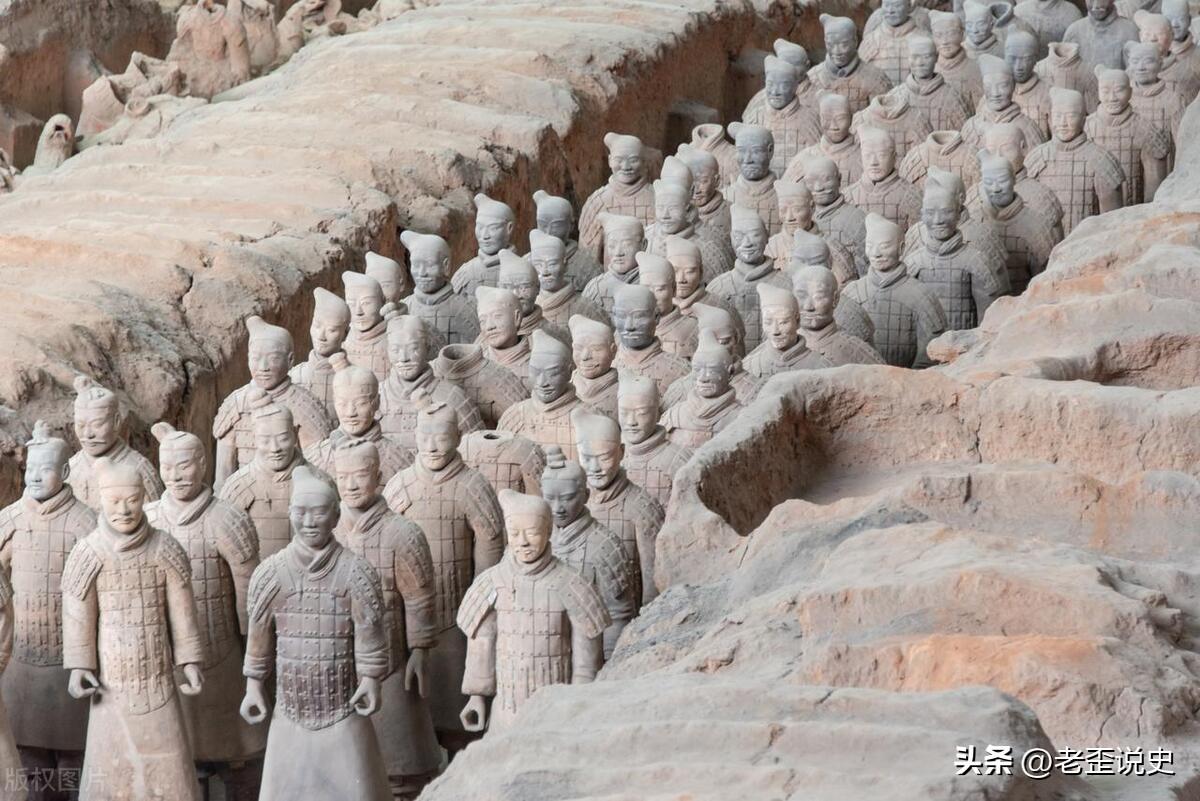
In 220, Cao Cao, a powerful minister in the Eastern Han Dynasty, died, and his son Cao Pi forced Emperor Xiandi to abdicate the throne and change his title to Wei. At this point, 195 years after the founding of the People’s Republic of China, the Eastern Han Dynasty, which passed down for 14 generations of emperors, officially perished, and history entered the Three Kingdoms period. In 221, Liu Bei proclaimed himself emperor in Chengdu in order to revive the Han Dynasty. His country name was Han, which was called Shu Han in history. In 229, Sun Quan proclaimed himself emperor in Wuchang, with the title of Wu, which was called Dongwu in history. In 263, Si Mazhao, who held the power of Cao Wei, destroyed Shu Han. In 266, after Si Mazhao’s death, his son Sima Yan forced Emperor Wei Yuan to abdicate and changed his country name to Jin, which was called the Western Jin in history.
In 280, Sima Yan sent troops on a large scale to destroy Soochow and unify the Three Kingdoms. In 290, after the death of Sima Yan, Emperor Hui of Jin succeeded to the throne. Because of his fatuity and incompetence, the Eight Kings rebelled, and the national strength of the Western Jin Dynasty was seriously weakened, and the surrounding ethnic minorities took the opportunity to rise rapidly. In 316, the Huns captured Chang ‘an and captured Emperor Chen. Since then, 51 years after the founding of the People’s Republic of China, the Western Jin Dynasty, which spread to four emperors, has perished. After the demise of the Western Jin Dynasty, all ethnic groups successively established countries in the north, which was called the Five Lakes and Sixteen Countries in history. This was also the most chaotic era in China’s history. In 317, Si Marui, the imperial clan of the Western Jin Dynasty who fled south to Jiankang, rebuilt the Jin Dynasty in Jiankang City after learning of the death of Emperor Chen, which was called the Eastern Jin Dynasty in history. In 383, Fu Jian, the former king of Qin Dynasty, marched south to conquer the Western Jin Dynasty after unifying the north. As a result, Fu Jian was defeated by the Eastern Jin Dynasty in the battle of Feishui. After the war, the former Qin dynasty was badly weakened and all ethnic groups became independent. In 420,Emperor Wu of the Eastern Jin Dynasty forced the Jin Dynasty to meditate and established the Liu and Song Dynasties. History entered the Southern and Northern Dynasties..
Since then, after the demise of the Southern Song Dynasty, four dynasties, namely the Southern Qi Dynasty, the Southern Liang Dynasty and the Southern Chen Dynasty, have appeared in the south, which are collectively called the Southern Dynasties. In 439, Tuoba Tao, the Northern Wei Emperor, reunified the North after Fu Jian, the former king of Qin Dynasty. Since then, after the demise of the Northern Wei Dynasty, five dynasties, namely, the Eastern Wei Dynasty, the Western Wei Dynasty, the Northern Qi Dynasty and the Northern Friday Dynasty, have appeared in the north, and they have confronted the courtiers of the Southern Song Dynasty, the Southern Qi Dynasty and the Southern Liang Dynasty. Since then, history has entered the Northern and Southern Dynasties. In 581,Jingdi of Northern Zhou DynastyGive up the throne in publicJian Yang, is forSui Wendi,Sui dynastyThe establishment of marks the selfNorthern Wei Dynasty (386-534)Has ruled northern China for 195 years.Northern DynastiesThe regime officially withdrew from the historical stage,Therefore, Emperor Wendi of Sui Dynasty unified the whole country and ended the Northern and Southern Dynasties, which had been in turmoil for nearly 300 years. In 604, Emperor Wendi of Sui Dynasty Emperor Wen of Sui.existRenshougongStrange deathHis son, Emperor Yangdi Yang Guang, ascended the throne. During his reign, he frequently waged wars and abused his power, which triggered a nationwide peasant uprising.
In 617, Emperor Yangdi’s cousin Li Yuan.Take advantage of the turmoil at the end of Sui Dynasty to arise inJinyang, south captured changan, set up the grandson of emperor Yangdi.Yang YouFor the emperor, Yang-ti was revered as the emperor’s father at a distance, and he led the great prime minister and sealed the Tang king.. In 618, Emperor Yangdi was killed by Yu Wenhuaji in Jiangdu, and Li Yuan forced Yang You to abdicate the throne and change his name to Tang for Tang Gaozu. Since then, the 37-year Sui Dynasty has perished. The most prosperous Tang Dynasty in China’s history opened.
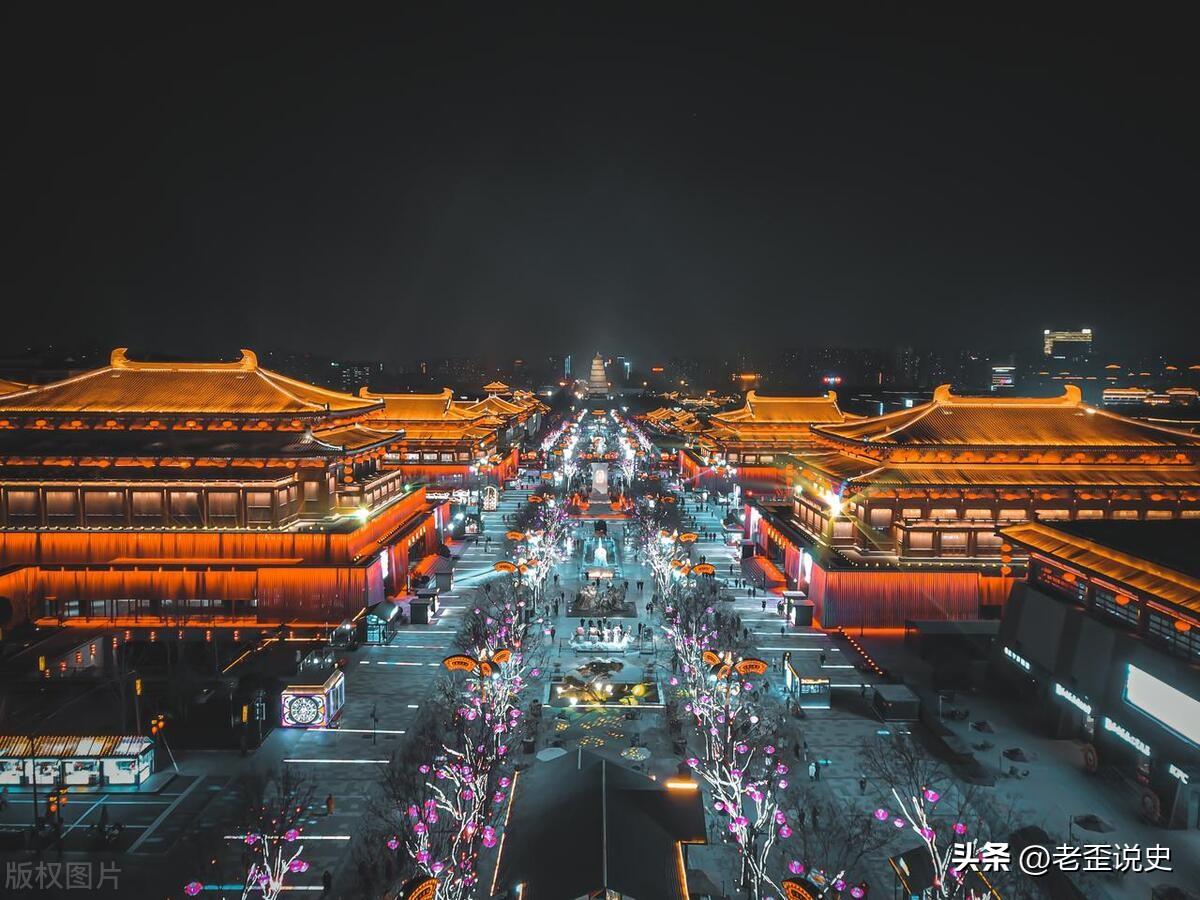
In 620, Li Shimin launched the Xuanwumen Rebellion. After killing Prince Li Jiancheng, Tang Gaozu Li Yuan was forced to give way to Li Shimin, for the sake of Emperor Taizong. In 690, Wu Zetian usurped the Tang Dynasty and proclaimed himself emperor, changing the country name to Zhou and making Luoyang its capital. So is Wu Zetian.Chinese historyThe only orthodoxy in the worldempress. In 705,crown princeLi XianPrime ministerZhang Jianzhi、Cui xuanyongWaiting for the minister in Luoyang, the capitalZiweicheng launchmutinyPersecuteWu Zetian abdicated, and set up Tang Zhongzong Li Xian restoration, restored the datang. In 712, under the rule of Emperor Xuanzong of the Tang Dynasty, the national strength of the Tang Dynasty reached its peak, which was called the flourishing age of Kaiyuan in history. In 755, the Anshi Rebellion broke out and it took eight years to be put down.The civil war caused a large loss of population and a sharp decline in national strength in the Tang Dynasty.. Since then, the Tang dynasty has turned from prosperity to decline, while the forces of various provinces have gradually grown. In 878, the Huang Chao Uprising broke out, and it took six years for it to be put down by the provinces. However, the pacification of the uprising led to the Tang Dynasty’s existence in name only, while the forces of the buffer regions became more powerful. In 907, Zhu Wen, the biggest buffer region power in the late Tang Dynasty, forced Tang Aidi.Li ChuGive way to the throne and change the country name into a girder.
Since then, in 289 years after the founding of the People’s Republic of China, the Tang Dynasty, which passed on 21 emperors, has perished.China entered.Five Dynasties and Ten Kingdoms Period. In 923, the Houliang perished, and the later Tang Dynasty, the later Jin Dynasty, the later Han Dynasty and the later Thursday Dynasty appeared in the Central Plains. These five dynasties are collectively called the Five Dynasties, and outside the Central Plains, there are ten separatist regimes, such as Qianshu, Houshu, Yangwu, Nantang, wuyue, Min, Nanchu, Nanhan, Nanping and Beihan, which are collectively called the Ten Kingdoms. Therefore, this period is collectively referred to as the Five Dynasties and Ten Kingdoms. In 960, Zhao Kuangyin, the general of the latter Zhou Dynasty, launched a mutiny in Chen Qiao, forcing the latter Zhou Dynasty.Zhou Gongdi’s Zen position,Change the country name to Song, which is called the Northern Song Dynasty in history. Since then, the Five Dynasties have ended and history has entered the Northern Song Dynasty. In 977, the Northern Han Dynasty, the last regime of the Ten Kingdoms, was wiped out by the Northern Song Dynasty. Since then, the Ten Kingdoms era has ended.
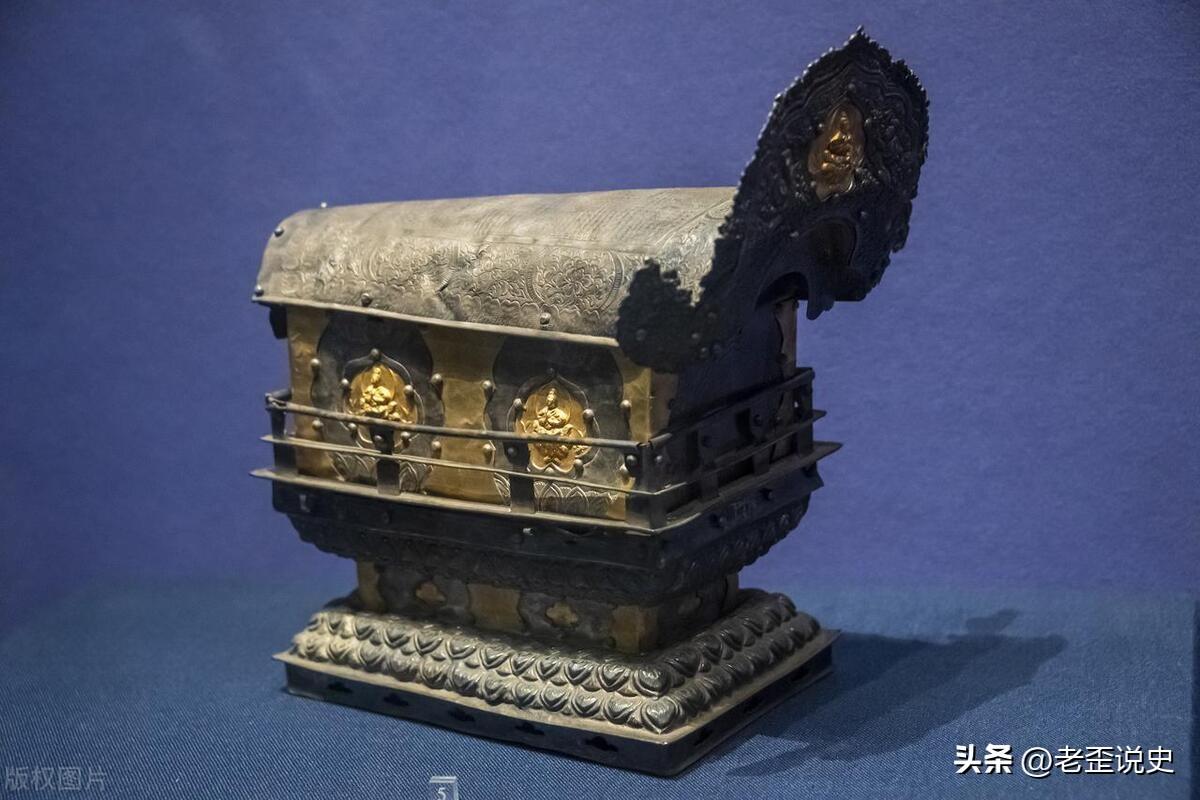
In 1038, Li Yuanhao, the leader of the Tangut, broke away from Song Dynasty and officially proclaimed himself emperor, with the title of Daxia and the history of Xixia. After Li Yuanhao proclaimed himself emperor, he won the wars against Song and Liao successively, and finally formed the pattern that Song, Liao and Xixia were divided into three parts. In 1100, due to the decadent rule of Song Huizong, Sung River and Fang La Uprising broke out one after another, and the Water Margin in Four Great Classical Novels is a story describing this era. The northern song dynasty is in jeopardy. In 1120, after the rise of the Jurchen nationality, which had been ruled by the Liao Dynasty for a long time, they launched an attack on the Liao Dynasty. When the Liao Dynasty was in jeopardy, Song Huizong mistakenly chose the self-destruction policy of uniting Jin to destroy Liao. In 1127, after the demise of Liao State, the State of Jin went south to attack Song on a large scale. Song Jun was defeated in this battle, and Song Huizong and Song Qinzong were captured. Since then, in 167 years after the founding of the People’s Republic of China, nine emperors perished in the Northern Song Dynasty.
In 1127, son of Song Huizong.Zhao GouYu Yingtian Fu (now Shangqiu, Henan Province) proclaimed himself emperor, forSong Gaozong. Song Gaozong was appointed first.Yue FeiWait for the main war faction to resist gold, and then the main peace factionQin GuiEighteen years of independence, signed "Shaoxing peace talks”。 In 1162, Xiaozong received Zen, made great efforts to govern and launched "Longxing northern expedition"failed to negotiate peace, and then vigorously developed internal affairs and created"Ganchun rule”。 In 1189 and 1194, Guangzong and Ningzong received meditation.Han TuozhouSeize power, openqingyuan ban on political parties, launch "Kaixi Northern Expedition”。 soon afterwardsShi MiyuanZhu Han has been good at politics for twenty-six years. In 1233, he was in charge of the clan and was appointed early.Zheng Qingzhi、Shi songzhiCarry out the policy of "leveling the whole country", actively fight against Mongolia, and reuse traitors in the middle and late period.Daquan Ding、Jia Sidao . After Du Zong acceded to the throne, he devoted himself to pleasure and state affairs declined. In 1276, the Yuan army invaded Lin ‘an, and the court went into exile in the south. Wen Tianxiang and other loyal officials were powerless. After the failure of the Yashan naval battle in 1279, Lu Xiufu and his young emperor jumped into the sea and died, and the Southern Song Dynasty finally perished.
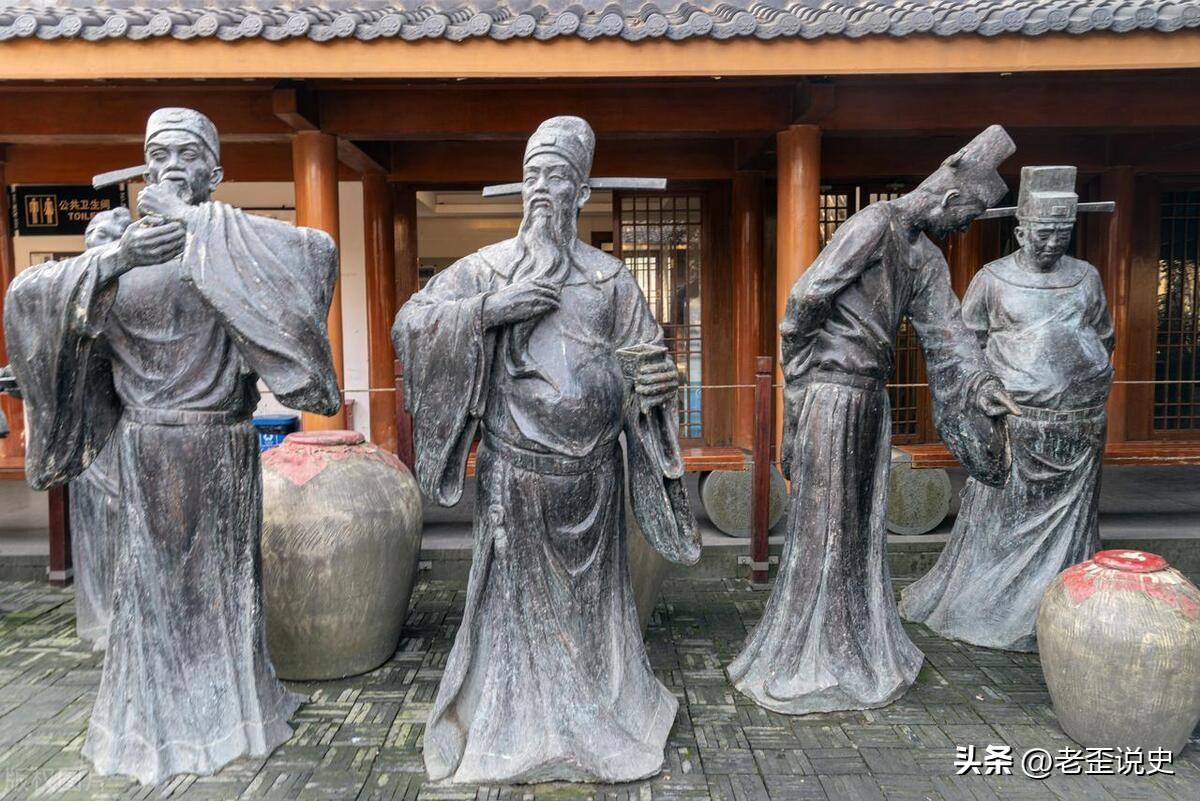
In 1206, after Temujin unified the ministries of Mongolia, he was elected as Genghis Khan and established the Mongolian Empire, with the title of Great Mongolia. In 1227, Mongolia perished in Xixia, and Genghis Khan died in the same year. In 1234, Mongolia joined forces with the Southern Song Dynasty to capture Kaifeng, and the following year, Mongolia began to attack the Song Dynasty on a large scale. In 1271, Kublai Khan, the grandson of Genghis Khan, changed his title from Great Mongolia to Dayuan. Since then, the Yuan Dynasty was formally established. In 1276, the Yuan army conquered Lin ‘an, the capital of the Southern Song Dynasty, and the Southern Song Dynasty court went into exile. In 1279, the Yuan Army and Song Jun launched a naval battle on the cliff mountain. In this battle, Song Jun was completely annihilated, and Lu Xiufu jumped into the sea with the emperor at the end of the Song Dynasty on his back. Since then, 153 years after the founding of the People’s Republic of China, the Southern Song Dynasty has witnessed the demise of nine emperors.
In 1351,Han Shantong、Liu Futong、Xu ShouhuiAt the end of Yuan Dynasty, the peasant uprising led by other leaders broke out, so it was called the "Red Scarf Army" because the rebels were wrapped in red scarves, and it was also called the "fragrant army" because they burned incense and gathered people. From 1355 to 1363, Liu Futong established Han Liner in Bozhou as "xiao ming wang", with the title of "Dasong" and the title of "Longfeng". Originally from the Red Scarf ArmyZhu YuanzhangA single flag,Have eliminated the forces such as Chen Youliang and Zhang Shicheng, andIn the first month of 1368, he proclaimed himself emperor in Nanjing, built Yuan Hongwu, and was named Daming.. In the same year, the Ming army invaded the capital of the Yuan Dynasty, and Yuan Shundi fled to the north. Since then, it has existed for 98 years, and the Yuan Dynasty, which spread to 11 emperors, ended.
In 1398, the grandson of Zhu YuanzhangZhu Yunwen acceded to the throne, and after Zhu Yunwen acceded to the throne, he practiced the policy of reducing vassals, and successively deposed Zhou Wang, Dai Wang, Qi Wang, Min Wang and Xiang Wang by sin, and died of self-immolation. ; In June 1399, Zhu Yuanzhang’s fourth son, Yan Wang.Zhu diTake the opportunity to arise and rebel and attack Nanjing, which is called "History"Battle of Jing Nan" , Zhu Yunwen inBattle of Jing NanThe whereabouts are unknown.In 1449, with the change of the Civil Fort, Zhu Qizhen, Ming Yingzong, invaded Wala in the north, and suffered a fiasco in the town of Civil Fort in Huailai County, Zhangjiakou. Ming Yingzong was captured, and the Ming Dynasty began to turn from prosperity to decline. In 1616, the leader of Jurchen, Mohachi, founded the country in Hetuala, known as the Khanate Gold, which was called Houjin in history. In 1636, Huang Taiji proclaimed himself emperor and changed his country name to Qing Dynasty. In 1644, Li Zicheng invaded Beijing, and Emperor Chongzhen of Ming Dynasty hanged himself in Meishan. Since then, in 276 years after the founding of the People’s Republic of China, the Ming Dynasty, which passed on 16 emperors, has perished. Since then, the imperial clan of the Ming Dynasty has established a number of political powers in the south, known as Nanming in history.
In 1644, the Ming general stationed in ShanhaiguanWu SanguiClear,DourgenleadQing soldiers entered the customs.. In the 20 years after entering the customs, Li Zicheng was pacifiedDashunstate power、Zhang XianzhongDaxiAndSouthern Ming DynastyWaiting for the regime. [13] Later pacified.San Francisco rebellion, unificationTaiwan Province of China, complete national reunification.When Emperor Kangxi arrived, he put down the San Francisco rebellion, forced the civil administration to surrender, completed the national reunification, and created the prosperity of Kangxi.Kang Yong’s three dynasties reached its peak, during which the traditional society of China made unprecedented development achievements. Land reclamation, abundant products,small-scale peasant economyOur social life is prosperous and stable, and our comprehensive national strength is strong.When the Opium War broke out in 1840, the Qing army was defeated and forced to sign a humiliating treaty of nanking. From ancient times to modern times in China history.

From the end of 1850 to the beginning of 1851, by Hong Xiuquan,Yang Xiuqing, Xiao Chaogui, Feng Yunshan,Wei Changhui、Da-Kai Shi [1] After years of preparation, the leading group organized a group camp in Jintian village, Guangxi, and launched an armed confrontation against the Manchu court.Hong XiuquanSolemnly declared an uprising in Jintian village, After the founding of the People’s Republic of China, the Taiping Heavenly Kingdom was called by the Rebels.Taiping army, sealing five army commanders, and promulgated a concise military law. All the soldiers wore hair and changed clothes, and their heads were wrapped in red scarves, starting from Jintian with a bang.taiping rebellion.In 1861, after the death of Emperor Xianfeng, Empress Dowager Cixi launched.Xin you coup, seized power and officially came to power. Since then, Cixi has started her half-century intervention period. In 1864, the Qing government put down the Taiping Heavenly Kingdom Movement. When the Sino-Japanese War broke out in 1894, the Qing government suffered a crushing defeat and was forced to sign treaty of shimonoseki, which humiliated the country. In the same year, Sun Yat-sen founded Xing Zhong Hui, and put forward the idea of expelling the Tatars and restoring China.Create a United governmentThe idea.
In 1908, Emperor Guangxu and Empress Dowager Cixi died one after another, and three-year-old Puyi succeeded to the throne. After the outbreak of the Revolution of 1911, various provinces became independent one after another, and it was at this time that Outer Mongolia was instigated by Russia to become independent. In the same year, Sun Yat-sen was elected as the provisional president of the Republic of China by representatives of seventeen provinces. The following year, Sun Yat-sen proclaimed the founding of the Republic of China.
In 1912, Yuan Shikai forced Puyi to abdicate. Since then, the founding of the People’s Republic of China has been 296 years, and the Qing Dynasty, which passed down to the 12th emperor, has perished. This year, Yuan ShikaiWith the support of imperialism, forcethe revolutionariesGive up power, stealProvisional president of the Republic of ChinaImplement autocracy and undermine the democratic Republic.. In 1915,SenateWhen the "National Congress" is held, all the national representatives are "in favor".constitutional monarchyAnd assume that the Senate is the general representative of the National Assembly, and write a letter to push Dai.Yuan ShikaiforChinese empireThe emperor.Yuan ShikaiAnnounce acceptance of the throne, overthrowrepublicanism,Restoration of monarchyChange the Republic of China to "Chinese empire",and ordered the abolition of the era of the Republic of China, changeRepublic of China (1912-1949)5 years (1916) is "Hong xianIn the first year, the history is called "Hongxian monarchy".
On December 25th,Tang Jiyao﹑Cai E﹑Li LiejunDeclare independence in Yunnan, crusadeYuan Shikaibetrayrepublicanism,War to protect the countryBreak out. Yuan Shikai gave up the Hongxian monarchy and restored the title of "Republic of China", but he still wanted to be the president of the Republic of China and used Duan Qirui as the leader.Secretary of StateAnd the army chief, trying to rely on the period of unity.northern coastal region in the Qing DynastyForces to suppress the southern uprising forces, but the uprising provinces did not stop military operations. In late May, Yuan Shikai became ill with anxiety, and on June 6 of the same year, due touraemiaDie without treatment.In 1919, the May 4th Movement broke out, which fully mobilized the masses, industry, commerce and learning to unite, and opened the prelude to the thorough anti-imperialist and anti-feudal struggle of the whole nation. Under this influence, the Communist Party of China (CPC) was secretly established in Shanghai in 1921, and the first cooperation between the Kuomintang and the Communist Party was formed in 1924. In 1927, after the death of Sun Yat-sen, Chiang Kai-shek launched a 4.12 counter-revolutionary coup, which led to the breakdown of the first cooperation between the Kuomintang and the Communist Party. In 1928, Zhang Zuolin was wounded by the Japanese Kwantung Army and died. In the same year, Zhang Xueliang announced that the Northeast changed its flag and obeyed the Nanjing National Government headed by Chiang Kai-shek. Since then, Chiang Kai-shek has achieved the reunification of China in name.
In 1931,Launch flagrantly918Incident, began a long-planned war of aggression against China.In 1937, the Japanese imperialists started with the Marco Polo Bridge Incident and launched a long-planned all-round war of aggression against China. In 1945, after eight years of arduous war of resistance, Japan surrendered unconditionally. After the end of War of Resistance against Japan, in 1946, Chiang Kai-shek launched a full-scale civil war. In 1948, after the three major battles of Liaoshen, Huaihai and Pingjin, Chiang Kai-shek’s main army was basically wiped out. In April 1949, Nanking was liberated and the Kuomintang fled to Taiwan Province. On October 1st, New China was founded. Since then, the 38-year-old Republic of China has ended and the history of China has turned a new page.
